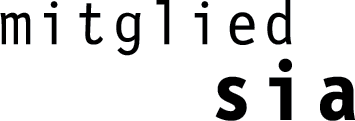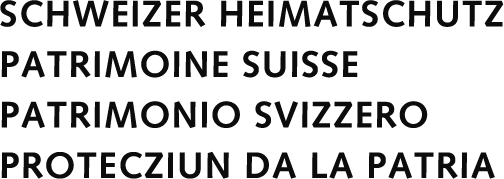Office Profile

As architects we bear responsibility for continuing the history of our architectural culture and for helping to shape the built environment in which we live. We are a classic architecture practice that aims to build and as such combine expertise in areas ranging from urban planning studies to architecture competitions, planning services of all kinds and to constructing the building. We link these specialist areas and place our knowledge at the service of the building and the spaces for life that it offers.
In our design work we never start from preconceived ideas, instead we collaborate with developers to identify the unique character of every commission and to anchor it in a broad physical, sociocultural, and ecological context. We are motivated by our aim to create buildings and places with a lasting value that enhance their immediate urban surroundings in spatial, design or social terms. In each of our projects we commit ourselves to producing sustainable design at the highest level – through simplicity, reusability, permanence, adaptability, and technical innovation we must work proactively at improving the building’s ecological impact and the way in which it uses resources.
We believe in and support the architecture competition as it is a guarantor of architectural culture and stimulates our own reflectiveness and creativity. While we see ourselves as our clients’ trustees, we also have an obligation to the users of our buildings and to the public. Given this wide-ranging responsibility we believe that design means constantly searching and negotiating; this is a meandering, iterative process and we appreciate the willingness of our clients and partners to embark on this insightful journey together with us.
We are proud of the fact that over a period of almost one hundred years our office has been bringing together around fifty staff members from quite diverse backgrounds. We believe it is important to cultivate an inclusive, open, and transparent atmosphere in our studio that allows our process-based design strategy to produce robust solutions and an architecture that is equally open and inclusive.

History
Wilhelm Fischer, the founder of the architecture practice, was born in 1900 in Dottikon, Aargau. Influenced by his father’s joinery business, he completed an apprenticeship as a structural draftsman and subsequently studied architecture at the technical college in Burgdorf. He gained his first experience in several offices in Germany and Switzerland.
An opportunity arose when Wilhelm Fischer was entrusted with the construction of the new factory and residential building SIM AG at Letzigraben in Zurich Albisrieden (1929), allowing him to become self-employed. This was followed by his first large housing developments, for example the apartment buildings on Speerstrasse (1932) and the former Morgenstern restaurant in Zurich (1935), which was regarded as an example of a moderate modernism and is still in a good state of preservation.
Drawing inspiration from the works of Max E. Haefeli, Wilhelm Fischer designed the Lagler House in Uitikon (1957), a private residential building with an open floor plan that employs the typical formal language of the 1950s. Wilhelm Fischer continued to contribute to the firm until 1979.
In 1960, Wilhelm’s son Eugen O. Fischer joined the architecture practice. After graduating from ETH Zurich and working as an assistant to Professor Albert H. Steiner, the young architect turned to professional practice and architecture competitions.
Success soon followed. Eugen O. Fischer’s designs reflect the influences of architects such as Walter M. Förderer, Roland Gross, Claude Paillard or Ernst Gisel, for instance his competition-winning design for Vogtsrain primary school in Zurich Höngg (1966–1973). Other prize-winning entries in competitions followed, including the church of St. Katharina in Zurich Affoltern (1967–1972), which received the award for good buildings of the city of Zurich, or the Büel B school building in Unterengstringen (1974).
In 1967, Eugen Mannhart joined the office, dedicating his efforts to developing the areas of project management and construction supervision. Together, the partners achieved further success, for example by winning the competition for the garden housing estate Winzerhalde (1978–1982), which also received an award for good buildings from the city of Zurich.
Following Eugen O. Fischer’s passing in December 1999, the leadership team continued to steer the architecture office in the direction that Fischer had initiated and increasingly focussed on the area of competitions.
From 1998 onwards, Christian Leuner collaborated with Fischer Architekten as a freelancer in various competitions. The upcoming generational change at Fischer offered him the opportunity become majority shareholder and to take over the management when the two firms merged in 2001. Beat Engeler, Ernst Breiter and Beat Eyer formed the new leadership team together with him.
The two-family house Thunstetten (1990–1992) and the Suhr residential and studio building (1992–1994), which was awarded the SIA prize “Priisnagel für gute Bauten” in 1995, illustrate the way of thinking and the architectural language of this new generation. Further important buildings include the AMAG automobile center in Dübendorf (2006–2011) and the Kreuzbühl school building extension in Zurich (2011–2015).
A sizable number of first prizes, such as the Lucerne Children’s Hospital (2010), the revitalization of the Nova Brunnen industrial wasteland in Ingenbohl-Brunnen (2010) and the Hochbord residential development in Dübendorf (2012), meant that until today the office is able to make the majority of its acquisitions from competitions and study commissions.
In 2017, Carol Gartmann joined the management team as business economist overseeing finance and human resources. Preparations for the next generational transition were underway with Simon Edelmann and Mark van Kleef joining in 2020, followed by Gian Müller in 2022. Christian Leuner’s retirement from operational business in spring 2023 marked the beginning of the fourth era for Fischer Architekten.
As of spring 2023, Simon Edelmann, Gian Müller, Mark van Kleef and Carol Gartmann form the new management and shareholders of Fischer Architekten. As members of the management team, they have already made significant contributions to the firm’s success in the past and have played a major role in shaping its culture.
Simon Edelmann joined Fischer Architekten in 2012, where he was a member of the extended management team from 2018 and has been a member of the management since 2020. He established a reputation in the field of competitions: A number of successes in recent years are based on his signature, including the Octavo II conversion in Zurich Oerlikon (2018), the LGT Vaduz expansion (2019) or the Lerchenweg residential development in Kloten (2020). Today, among other things, he leads the design team and serves as chairman of the board of directors.
Gian Müller has been with Fischer Architekten since 2013. Having been responsible for BIM and for construction-related tasks in all project subphases as a member of the extended management team from 2018 to 2022, he joined the management in 2022. Among the projects he led to successful completion with a sure hand are the Hochbord residential development in Dübendorf (2012–2017) or the residential and commercial building at Ziegeleiplatz in Winterthur Dättnau (2015–2021).
Mark van Kleef was managing director of the Swiss office of Max Dudler Architekten, which he built up and led to success. Among his most important projects from this time are the Pädagogische Hochschule on Europaallee in Zurich or the four-part building ensemble of UBS, also on Europaallee, which Max Dudler Architekten realised together with Gigon Guyer Architekten and David Chipperfield Architects. In 2020, he joined Fischer Architekten as a member of the management team. He focuses primarily on execution planning, with projects such as the Dietlimoos housing estate in Adliswil (2014–2025) and the Lerchenhalde cooperative housing estate in Zurich Affoltern (2019–2025), as well as general planning.
Carol Gartmann completes the management team as a federally certified auditor. She is responsible for controlling at project and company level and manages the areas of finance and human resources. Furthermore, she is in charge of the supervision and further development of the quality management.
The new management team got off to a promising start: in 2022, the Birmensdorferstrasse high-rise building in Zurich Wiedikon was inaugurated, the realization of which had been preceded by a long planning phase. In 2023, the team celebrated a significant competition victory, earning first prize for the development of the Schützenmatt site in Emmen. In its new constellation, the management has set itself the goal of providing clients with the usual high planning quality and construction expertise, but also to increasingly seek answers to current social concerns such as energy efficiency, resource preservation and circular construction.
Committees
SIA
NNBS (Sustainable Construction Network Switzerland)
Schweizer Baumuster-Centrale
Schweizer Heimatschutz (Swiss Heritage Society)
Forum Energie Zürich
Architekturforum Zürich
S AM Schweizerisches Architekturmuseum
ZAZ Bellerive Zentrum Architektur Zürich
SIA LHO revision, working group
SIA 101
Campus Langenthal, renovation and extension, project competition, 2023
Adliswil station building, project competition, 2022
Töpferdörfli, Zurich, study commission, 2022
Housing development, Pfungen, competition, 2021
Manegg, subarea E, Mobimo, Logis Suisse AG, study commission, 2017
Migros Kreuzplatz, Zurich, 2015
“Wohnen am Dorfbach”, Brüttisellen, study commission, 2013
ZSC Lions and Volero Zurich, ice hockey and volleyball arena, 2013
Community hall, Oberiberg, 2005
Neighbourhood and commercial centre, Zurich Seebach, 1990








